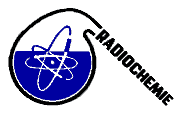Speaker
Mr
Pawel Grabowski
(Technical University of Lodz, Faculty of Chemistry)
Description
Among of the naturally occurring radionuclides in the different types of water the long lived uranium isotope 238U, two radium isotopes: 228Ra, 226Ra, and 210Po are of practical importance due to their radiotoxicity. The observed levels of these radionuclides in underground water depend on the chemical compositions of the adjacent geological formation. Under favourable conditions, for example in the presence of chloride and bicarbonate anions, solubility of mineral rock components including trace amounts of radionuclides increases. A role of the underground water supplying systems including geothermal water is recently rapidly growing as they are used not only for energetic, balneological or recreational purposes but as well as a source of drinking water that should be in accordance with EU Directive 98/83/EC and WHO recommendation.
The aim of these study was to elaborate a fast and efficient method for simultaneous determination of uranium and 210Po in high salinity water samples.
210Po and uranium radionuclides were preconcentrated from 0.5 dm3 saline media by co-precipitation with hydrated MnO2, followed by dissolution of the precipitate in 200 ml of 1 M HCl. Uranium radionuclides can be directly determined by ICP MS method, using part of this solution because the total salinity decreases below 1 g/dm3. From the second part of solution, before 210Po separation for liquid scintillation counting, majority of naturally occurring α-emitting radionuclides (uranium, thorium and protactinium) are stripped by extraction with 50 % solution of HDEHP in toluene. Finally 210Po is simply separated from other interfering nuclides by direct transfer to an extractive scintillator containing 5 % of trioctylphosphine oxide (TOPO) in Ultima Gold F cocktail and determined by a α/β separation liquid scintillation technique. The detection limits are <1 mBq/dm3 for 210Po and 0.01 ppb for 238U.
Quality assurance of the worked out method was checked out in two ways:
1) participation in the IAEA interlaboratory studies (see Table 1) for 210Po determination in water samples
2) determination of uranium and 210Po in Standard Reference Material IAEA-381 – Irish Sea water. Uranium recovery for these samples was in the range 0.88±0.05. 210Po activity is not reported for this SRM, therefore its activity determined by elaborated method was compared with that obtained by direct 210Po deposition on silver discs and α spectrometry counting. These two methods gave practically the same value 30.5±2.3 mBq/dm3 and 30.0±3.0 mBq/dm3, respectively.
Table 1 Results (in Bq/kg) of interlaboratory studies 210Po in acidified water
Sample IAEA value IAEA unc. Measured value Measured unc. Measured/IAEA
1 52.8 1.4 52.0 0.6 0.99
2 101.6 2.8 95.3 1 0.94
3 52.8 1.4 52.1 0.7 0.99
4 101.6 2.8 99.3 1 0.98
5 blank - 0.3 0.03 -
Primary author
Mr
Pawel Grabowski
(Technical University of Lodz, Faculty of Chemistry)
Co-authors
Prof.
Henryk Bem
(Technical University of Lodz, Faculty of Chemistry)
Mrs
Magdalena Dlugosz
(Technical University of Lodz, Faculty of Chemistry)

